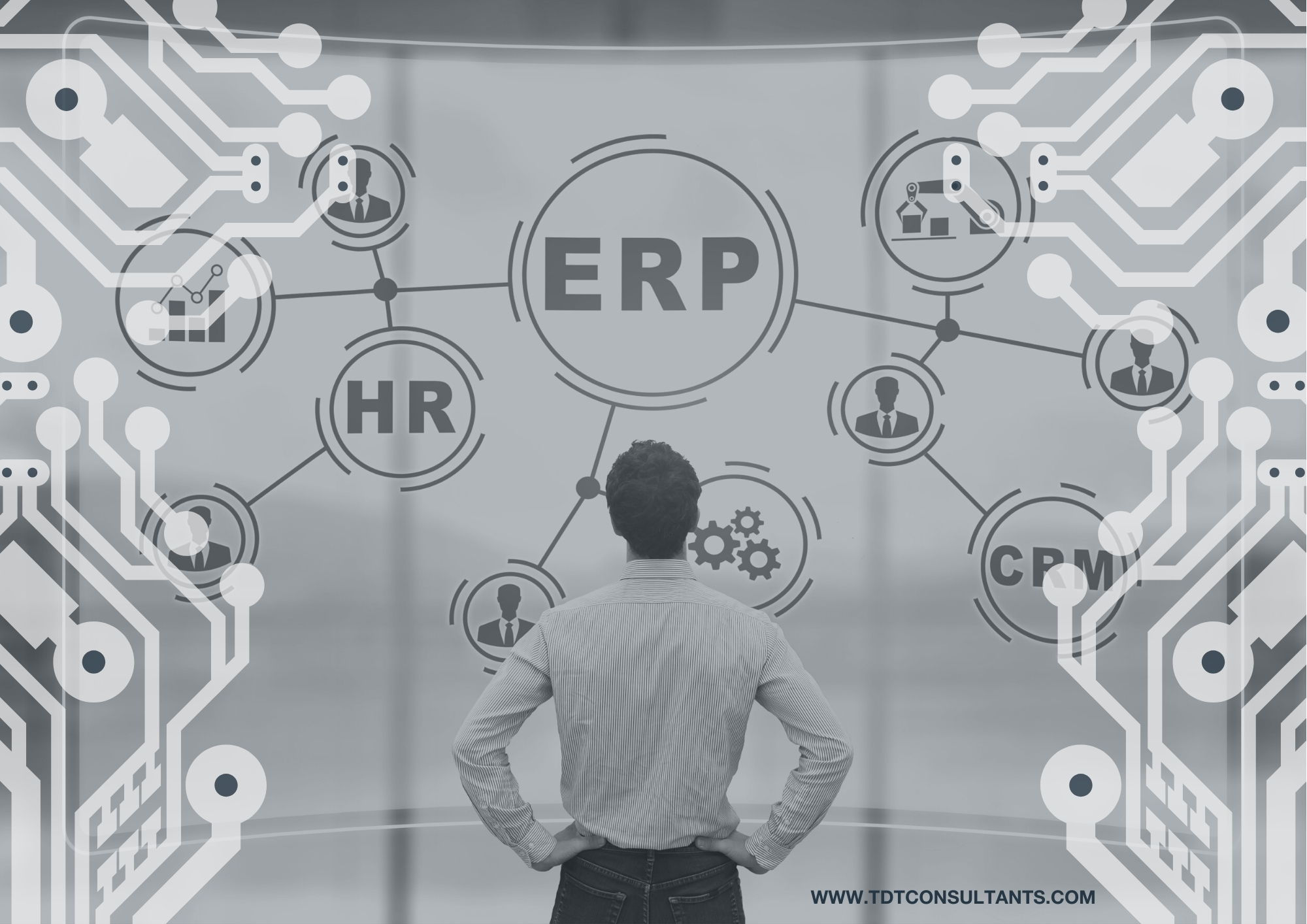The Challenges of ERP Implementation
An integrated management software package (ERP) is a longstanding piece at the heart of many organizations’ development strategies. Implementation is a complex project, and ERP systems are too often set up without strategic reflection or considerations and management of the consequences. In this article, we explain the critical elements to make your implementation successful.
What is Enterprise Resource Planning (ERP)?
Enterprise Resource Planning (ERP) software is used to manage a company’s daily activities including accounting, purchasing, project management, risk management and compliance, as well as supply chain operations. A complete ERP suite also includes enterprise performance management (EPM) software that helps plan, budget, forecast and report on a company’s financial results. ERP systems connect a multitude of business processes and activate the flow of data between them. By collecting a company’s shared transactional data from multiple sources, ERP systems eliminate data duplication and ensure data integrity with a single source of information. Today, ERP systems are essential for businesses of all sizes and industries.
The Role of Data Migration
Data migration plays a critical role in any ERP implementation. If this is your first, you will have no other choice than to enter the information yourself as you go – with a few exceptions. On the other hand, if your company needs to centralize several pieces of software in a new ERP, the data for each must be migrated during the implementation.
The cost of migration must also be considered in regard your overall budget. The integration of your new ERP into your digital ecosystem has an impact on the cost of the project. The more complex your IT architecture, the higher the cost may be. Understanding your data architecture’s complexity can be a good way to estimate implementation, migration, and integration costs.
Continuous Improvement Through an ERP
ERP systems are designed around a single, defined data structure (schema) that typically has a common database. This helps ensure that information used across the enterprise is standardized and based on common definitions and user experiences. These foundational concepts are then interconnected with business processes driven by workflows across departments (e.g., financial services, human resources, engineering, marketing and operations), connection systems, and the people who use them. Simply put, an ERP solution helps to integrate people, processes, and technologies into an innovative business.
For example, consider a company that builds cars by sourcing parts and components from multiple suppliers. It could use an ERP system to track the demand and purchase of these goods and ensure that each component of the entire process from purchase to payment uses consistent and clean data related to workflows, business processes reporting and analysis of the company. When the ERP is properly deployed at this automaker, a component – say, front brake pads – is uniformly identified by its part name, size, material, source, lot number, number supplier part, serial number, cost, and specifications, as well as a host of other descriptive and data-driven elements.
Since data is the lifeblood of any innovative company, an ERP system optimizes that data by facilitating its collection, organization, analysis, and dissemination to the individuals and systems that need it to better fulfill their role and assume their responsibilities. The ERP also guarantees that the fields and attributes of the data are passed on to the correct account in the company’s general ledger so that all costs are correctly tracked and represented. If the front brake pads were called “front brakes” in one software system (or maybe a set of worksheets), “brake pads” in another, and “front pads” in a third, it would be difficult for the automaker to know how much annually it spends on front brake pads, and whether to change suppliers or negotiate for a better price.
One of the key principles of ERP is the central collection of data for distribution. Instead of multiple standalone databases with an endless inventory of disconnected spreadsheets, ERP systems bring order into chaos so that all users – from management to accounts payable clerks – can create, store, and use the same data derived by common processes. With a secure and centralized data repository, everyone in the business can rest assured that data is accurate, up-to-date, and complete. Data integrity is ensured across the enterprise – from the quarterly financial report to a one-off report on bad debts – without going through spreadsheets manually which often results in error.
Choosing the Right ERP Solution
To truly deem an ERP successful, it must be adaptable and customizable to a company’s needs. There are now multiple ERP systems available on the market, but not every ERP solution meets the needs of users in the same way. While designed as integrated software, all ERPs have an Achilles heel and may ultimately turn out to be less reliable than its competitors in certain areas. As a result, while most software should be able to meet the basic needs of your business, it is best to choose one whose strengths match your specific needs.
Assess your needs in order of priority before choosing and implementing an ERP solution. Take the time to observe department practices to understand each group’s reality. This is advice especially valid for large companies where the day-to-day processes may be more complex to grasp.

Conclusion
It is impossible to ignore the impact of ERP solutions in today’s business world. As business data and processes are consolidated into ERP systems, companies can align separate departments and improve workflows, resulting in significant savings down the line.
If you are looking to get started with an ERP solution but do not know what to do next, contact our team and we will treat you to a free, non-binding consultation with one of our experts.
